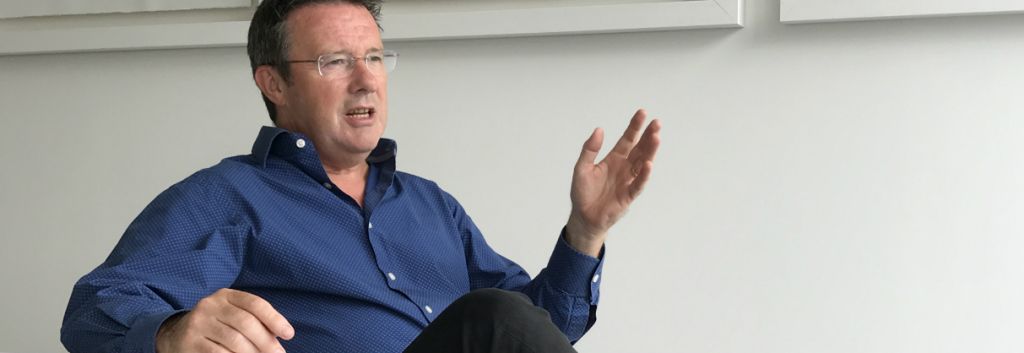Academic, entrepreneur and now venture partner Trevor Baglin discusses his successful experience working with the unique model of virtual biotech.
Trevor Baglin, along with Jim Huntington and David Grainger, is one of the members of the team behind XO1, a virtual biotech founded in 2013 and acquired by Janssen Pharmaceuticals just two years later in 2015. The team of serial entrepreneurs is now working on two other coagulation focused companies, ApcinteX, founded in 2014, and SuperX, in 2015.
The success of their virtual biotech ventures has lured Baglin to work with the investment firm Medicxi, which has been behind the fundraisings of all three companies. “I continue to do basic research leading to drug discovery and drug development with Jim Huntington and David Grainger,” he says. “I’ve only recently become a venture partner at Medicxi, in January this year. They’re complementary roles that fit very nicely side by side.”
Curious to know more about how the virtual biotech model works, I asked Baglin about his experience as an academic and entrepreneur specialized in this unique business model.
First of all, what is exactly a virtual biotech?
It’s basically a company with no employees. All the development is contracted with a contract research organization. The virtual biotech company avoids unnecessary use of capital, and there’s no overhead consumed capital because there are no employees. Setting up a company with staff and HR and salaries and pensions costs a lot of money before you even start working. We have none of those. As soon as the money is allocated, we begin to invest it directly in drug discovery and development. With no dilution.
However, it’s not a common model. In the EU, most people require salaries to work. But if you have founders coming from academia that’s not always necessary. Then, time spent on the company is variable. Sometimes it could just take a couple of hours a week; in other cases, it could take nearly all your time. It depends on what’s happening. I was a clinician at Addenbrooke’s Hospital in Cambridge, and I reached the point where I had to leave in order to devote myself to these companies and drug development.

What’s the key to making this model work?
Well, I think first of all you’ve got to have a good idea. You have to have a very strong science background to complement the medicine. And you have to choose your investment partner extremely carefully. That investment partner would ideally bring a good network to facilitate an acquisition as well as bringing cash. The relationship between founder and investor is pivotal.
In our case, we had Medicxi, which is slightly different from the other investment firms. Personally, I’d say it’s more of a drug development company with an extensive development pipeline of candidate molecules. Medicxi works with an asset-centric model, which is pretty unique and sits neatly with the virtual biotech model.
In the single-asset model, capital investment can be absolutely aligned to a single critical asset, and only the amount required to meet the next inflection point is what’s put at risk. It’s a very lean and effective way to develop drugs and minimize risk in terms of poor allocation of resources, including finance. It works very well for me, and it’s a model I do particularly favor.
XO1 was an incredibly fast success, what’s the story behind it?
Jim Huntington, a professor at Cambridge University, and I were working together since 2000 to understand the molecular basis of the regulation of coagulation. As we got more involved in that, we realized there was an opportunity for rational drug design, building on observations of natural mechanisms. We began to work on the hypothesis that it might be possible to modulate enzymes that block coagulation rather than inhibit them and consequently produce candidate drug molecules with a substantially different profile to all current anticoagulant drugs in clinical use.
One of the targets was heparin cofactor II, a serine protease inhibitor of the blood clotting enzyme thrombin. Using X-ray crystallography we were able to unravel the structure-function relationship of heparin cofactor II, which is based on its interaction with thrombin’s exosite 1. We increasingly focused on developing a molecule to inhibit this exosite, and in 2008, by chance, we got a proof of concept in a human. A patient presented at my hospital with what’s called a paraprotein, which is sort of a rogue antibody produced by the aging immune system.
This antibody targeted exosite 1 of thrombin, and yet she didn’t bleed over several years of observation. That encouraged us to design a new recombinant antibody which mimics it to some extent, and we did a number of experiments in animals that showed this was a powerful anti-thrombotic molecule with a very wide therapeutic window that did not induce bleeding at full therapeutic effect. That really changed the paradigm of how we thought about coagulation.
We had a lot of big pharma interest, and I think we were very good at socializing the concept. While the acquisition took place only 23 months after forming XO1, negotiation pre-acquisition began 12 months before the actual acquisition. Consequently, Janssen had very good visibility for quite some time before they actually decided to acquire the asset.

What are you working on now?
ApcinteX is completely different from XO1. It is built on observations in the clinic of patients with severe hemophilia who by chance co-inherited a common mutation known as the factor V Leiden mutation. Now, this mutation downregulated the protein C natural anticoagulant pathway. And so I had the idea that rather than treating hemophilia by replacing the specific missing clotting factor, it might be possible to restore normal clotting capacity by downregulating the natural anticoagulant protein C pathway.
Jim designed a novel protein to inhibit the activated protein C, (a serine protease that inactivates clotting factors) and we called this molecule “ SerpinPC.” Our molecule is built on a common serpin (serine protease inhibitor) scaffold which gives it several useful properties from long half-life, low immunogenicity, excellent CMC properties, and potential for subcutaneous administration. We took that molecule into hemophilia knockout mice models, where it normalized coagulation and eliminated abnormal bleeding. The aim is to further de-risk it, so we’re now into manufacturing the GMP material and hope to go into first-in-human clinical trials in two years.
We don’t plan to sell anytime soon. We have sufficient funding to take Apcintex’ SerpinPC into clinical development. Obviously, if there was a potential acquisition before that, we would consider it, but it’s not necessary. The beauty about SerpinPC is that its clinical development program is relatively simple. And it’s possible to get proof of concept in humans with a relatively small phase I/II clinical trial.
And are you planning on starting any new companies?
Yes, we have a number of ideas in the pipeline, some of which should emerge as startups, continuing the single asset model, this year.
Images via Trevor Baglin; iLongLoveKing / Shutterstock; Janssen





